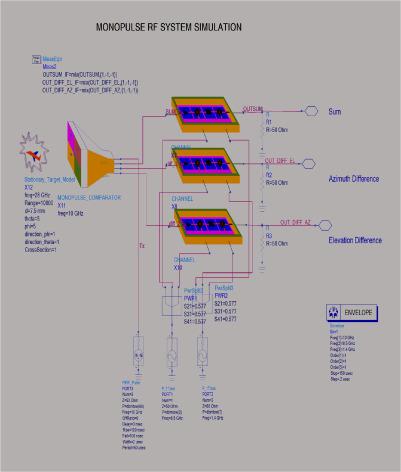当前位置:
X-MOL 学术
›
Trans. Emerg. Telecommun. Technol.
›
论文详情
Our official English website, www.x-mol.net, welcomes your
feedback! (Note: you will need to create a separate account there.)
Analysis and design of low‐power and high‐gain complementary metal oxide semi‐conductor low noise amplifier operating at 28 GHz frequency for millimeter wave LEOS, local multiport distribution system and radar application
Transactions on Emerging Telecommunications Technologies ( IF 2.5 ) Pub Date : 2020-06-11 , DOI: 10.1002/ett.3950 K Suganthi 1 , S Malarvizhi 1
Transactions on Emerging Telecommunications Technologies ( IF 2.5 ) Pub Date : 2020-06-11 , DOI: 10.1002/ett.3950 K Suganthi 1 , S Malarvizhi 1
Affiliation

|
Low‐noise amplifier supports broadband standards with the advantage of low‐power, high‐gain, and low noise figure (NF). The low‐frequency design of this low‐noise amplifier (LNA) is used for multistandard wireless applications and the high‐frequency design of this LNA can be used in millimeter wave radar applications. This LNA is designed at the front‐end for amplification in the receiver side, so that signal to noise is adjusted on the multistandard receivers. LNA permits performance of the design with various parameters like NF, power efficiency, gain of the LNA, figure of merits, and linearity of the low‐noise amplifier. In 28 GHz, millimeter wave (mmW) circuits' design and analysis with high gain, low power, low NF, and wide bandwidth are preferred for radio frequency front end. This paper discusses, the Cascode design of CMOS LNA circuit at 28 GHz, and the novelty of the design is that it can operate at two different set of frequency bands (21 and 28 GHz) and it is multiband and multitunable. The design's conversion gain (S21) of 17.4 dB, NF of 4 dB, stability of 1, power optimized to 22.3 mW, and area of 0.399mm2 are reported. The input and output reflection coefficients are S11 ≤ −10 dB and S22 ≤ −10 dB. Electromagnetic simulation is performed using advanced design system tool. Output power of the proposed design is 2 dBm, transition frequency (fT) is 64GHz, and maximum operating frequency (fmax) is 96GHz. The observed results show that the proposed CMOS LNA design finds its suitability in mmW cloud radar application of mono‐pulse radar system and radar front‐end receiver circuits.
中文翻译:

用于毫米波LEOS,本地多端口分配系统和雷达应用的工作在28 GHz频率的低功率高增益互补金属氧化物半导体低噪声放大器的分析和设计
低噪声放大器具有低功耗,高增益和低噪声系数(NF)的优势,支持宽带标准。该低噪声放大器(LNA)的低频设计用于多标准无线应用,而该LNA的高频设计可用于毫米波雷达应用。该LNA设计在前端,用于在接收器侧进行放大,因此可以在多标准接收器上调整信噪比。LNA允许使用各种参数来执行设计,例如NF,功率效率,LNA的增益,品质因数和低噪声放大器的线性度。在28 GHz中,射频前端应首选具有高增益,低功耗,低NF和宽带宽的毫米波(mmW)电路的设计和分析。本文讨论 CMOS LNA电路在28 GHz时的Cascode设计,该设计的新颖之处在于它可以在两组不同的频带(21和28 GHz)下工作,并且具有多频带和可调性。设计的转换增益(报告了17.4 dB的S 21),4 dB的NF,稳定性1,功率优化至22.3 mW,面积0.399mm 2。输入和输出反射系数是小号11 ≤-10 dB和小号22 ≤-10分贝。电磁仿真是使用高级设计系统工具执行的。拟议设计的输出功率为2 dBm,过渡频率(f T)为64GHz,最大工作频率(f max)为96GHz。观测结果表明,所提出的CMOS LNA设计适合于单脉冲雷达系统和雷达前端接收器电路的毫米波云雷达应用。
更新日期:2020-06-11
中文翻译:

用于毫米波LEOS,本地多端口分配系统和雷达应用的工作在28 GHz频率的低功率高增益互补金属氧化物半导体低噪声放大器的分析和设计
低噪声放大器具有低功耗,高增益和低噪声系数(NF)的优势,支持宽带标准。该低噪声放大器(LNA)的低频设计用于多标准无线应用,而该LNA的高频设计可用于毫米波雷达应用。该LNA设计在前端,用于在接收器侧进行放大,因此可以在多标准接收器上调整信噪比。LNA允许使用各种参数来执行设计,例如NF,功率效率,LNA的增益,品质因数和低噪声放大器的线性度。在28 GHz中,射频前端应首选具有高增益,低功耗,低NF和宽带宽的毫米波(mmW)电路的设计和分析。本文讨论 CMOS LNA电路在28 GHz时的Cascode设计,该设计的新颖之处在于它可以在两组不同的频带(21和28 GHz)下工作,并且具有多频带和可调性。设计的转换增益(报告了17.4 dB的S 21),4 dB的NF,稳定性1,功率优化至22.3 mW,面积0.399mm 2。输入和输出反射系数是小号11 ≤-10 dB和小号22 ≤-10分贝。电磁仿真是使用高级设计系统工具执行的。拟议设计的输出功率为2 dBm,过渡频率(f T)为64GHz,最大工作频率(f max)为96GHz。观测结果表明,所提出的CMOS LNA设计适合于单脉冲雷达系统和雷达前端接收器电路的毫米波云雷达应用。











































 京公网安备 11010802027423号
京公网安备 11010802027423号